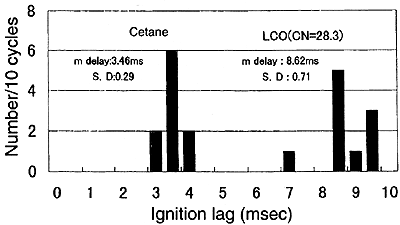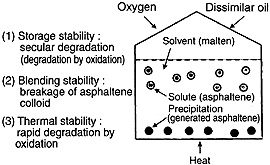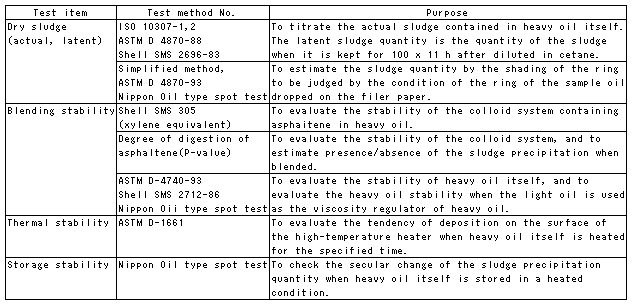
Fig. 9 Comparison in mean ignition lag between cetane and LCO
4. Method for evaluating stability
Factors for degrading the stability of heavy oil etc. include, as illustrated in Fig. 10, the secular degradation during the storage, oxidation degradation during the heating condition, and generation of sludge due to the blending of dissimilar oil, and the oxidation degradation during the heating is one in the rapid condition, while the oxidation degradation during the storage is one in the meek condition. The sludge generation is estimated attributable to the precipitation and coagulation of a part of asphaltene due to the breakage of the phase balance in the colloid system in the blending of dissimilar oil. The test methods on the stability of heavy oil are specified in a fairly detailed manner by the IP method, the Shell method, the ISO method etc., and in this report, the concept on the stability forming the basis of these methods, the method of evaluation, and applications are explained.

Fig. 10 Factors for defective stability of marine fuel oil
4.1 Thermodynamic handling of stability
4.1.1 Equation of thermodynamics2)3)
Generally, the Scatchard-Hilderand formula is often used. The formula (1) shows that the maximum soluble quantity of asphaltene depends on the quantity of the solvent (malten), the properties and the temperature of the solute (asphaltene) and the solvent.
Table 1 Major test methods of stability of heavy oil

BACK CONTENTS NEXT